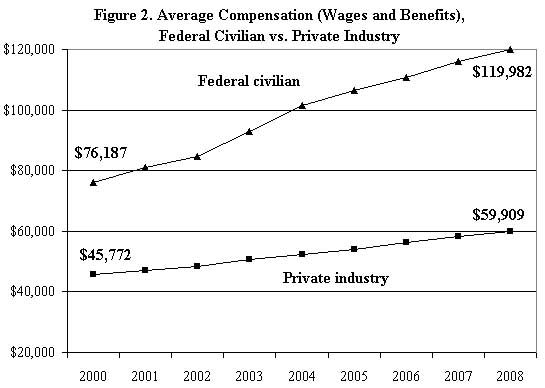 Bavaria? Surrey? No, New York City.
Bavaria? Surrey? No, New York City.
The writer, Witold Rybczynski, says:
The planned community of 142 acres, which introduced the British Garden City movement to the United States, was intended to demonstrate the latest ideas in town planning, housing, open space, and building construction. It's pretty obvious that in the intervening years, Levittown, N.Y.—not Forest Hills—became the prototype for American planned communities. But in an age of diminishing resources and an interest in walkable neighborhoods, it is worth revisiting Forest Hills. One of the strengths of the Garden City movement was that it dealt with town planning in a comprehensive way, and this 100-year-old piece of New York City remains a model for how the attractions of town and suburbs can be combined.
Part of Forest Hills Gardens's appeal, as the slide show photos attest, is that it's plain traditionalist. It is sincere, exhibiting none of the wink-wink campy "gestures" of the unlamented '80s post-modernism. The Forest Hills development appears to have been designed primarily to please, even if there was a subsidiary motive of promoting a better concept of housing.
Why do we find pleasure, solace even, in such a place? It is beautiful, true, but not pure beauty. Even where modernist architecture has claimed its work to be beautiful — and that isn't often a priority — it aspires to an elegance of form, untainted by supposedly retrograde virtues like a historical bloodline or "useless" decoration. "Form follows function," once supposedly a brilliant new insight, is actually a banal observation; there never was a building whose form wasn't to some degree associated with its function. But modernism went beyond that, assuming function to be the alpha and omega of form. Architecture was henceforth to reject anything but factory-like utilitarianism and a vague, brain-cooked notion of revealing the "essence" of a building.
That doctrine has cast a deadly spell that now clings to large parts of most cities around the world. Other than architects and academics, no one imagines you can give life to a building by turning it inside out to display somebody's cockeyed dream of a Platonic Idea. Run-of-the-mill human beings, like you and me, want to look at things that tickle their fancy, take them on a trip, make them pause a moment to admire.
Roger Kimball wrote that "it is one of the virtues of the humanist instinct to recognize that the human world is — essentially is — something more than a distillation of essences.
"It is, on the contrary, a world of appearances: of how things look and comport themselves. This is something that our culture, and our architecture, has largely lost sight of, to our very great diminishment. … This is the profound wisdom contained in Oscar Wilde’s apparently flippant remark that only a very shallow person does not judge by appearances."
But if Forest Hills Gardens remains an attractive locale, and an admirable effort to set a good example for the lived-in environment — an example that, as Rybczynski acknowledges, went pretty much for naught — I take issue with some of the other statements and assumptions in the photo captions.
They touch all the bases of current New Urbanism theory: walkability, density, mixed-use facilities, a direct connection to mass transportation, that kind of thing. For instance:
Walkability, which is the goal of most town planners today, requires smaller lots and more compact houses in order to keep distances short. In the housing terrace at right, 17-foot-wide town homes use land efficiently, but even detached house lots at Forest Hills can be as small as 2,800 square feet (compared with a typical suburban lot size today of 20,000 square feet). Forest Hills has a variety of single-family houses: attached, semidetached, and freestanding. The aim of having many housing types was partly to give more choices to buyers and partly to create the kind of visual variety found in old towns. This is very different from the sort of homogeneity that characterizes most modern suburbs.
And
The town square faces a station on the Long Island Railroad, which connects Forest Hills to Manhattan, 20 minutes away --an early example of transit-oriented development. The buildings on the square have stores and restaurants at street level and apartments above, just the sort of mixed-use that many developers are promoting today. The tallest building, nine stories, originally housed the Forest Hills Inn, since converted into condominiums.
The first thing we should note is that Forest Hills Gardens is not an urban development, although a hundred years on it finds itself surrounded by an urban landscape. Queens was a suburb in 1909 — much of it still farmland. No development like this could conceivably be created in the New York City of today, property costs being what they are, unless it was marketed to millionaires. So if it's a model for anything, the Gardens are a model for suburbia.

Suburbs aren't what they used to be, however. Rybczynski seems to think they are all tract-house civilian army camps like Levittown. Too many of them, especially older ones, are. But residential architects, who are forced to try to design communities that people will want to buy into, lack the freedom of their celebrity colleagues to launch their most wacko concepts 40 stories into the air.
Many contemporary suburban developments have, in their own way, at least tried for some charm and local or historic flavor. With mixed success, of course: some are slapdash duds, others work. That's life. But if the United States doesn't undergo an Argentina-type economic meltdown, further suburban development looks like adopting many of the principles that Forest Hills Gardens demonstrate.
But a lot of this New Urbanism ideology is crackpot stuff. Does Rybczynski seriously imagine that suburbanites (as opposed to New Yorkers and other hard cases) who can afford a choice want to live in apartments with stores and restaurants beneath them? With a railroad station just down the street? And a nine-story hotel (that, I assume, is what the Forest Hills Inn was) in their midst? Get outta here, as they say in New York.
As for the mixture of types of single family housing — detached, semi-detached, and attached (i.e., row houses) — yup, it adds variety, looks good in a glossy magazine spread. But I have news for our author: People do not move out of the city so they can live in row houses that look like 19th century Liverpool. If developers insist on building attached condos and families can't afford anything else, they'll occupy them and hope that one day they can afford something better. But let's not make a virtue of necessity. Americans want to live in detached houses with some space around them, not shoe boxes sharing walls with neighbors.
Finally, let's talk about this density thing, the Holy Grail of "green," "environmentally sensitive," New Urban head-in-the-ether academics. Density is not good. Density is bad for human beings. It drives them all slightly mental, and can send some around the bend.
John B. Calhoun, M.D., wrote a famous paper published by the august Royal Society of Medicine titled "Death Squared: The Explosive Growth and Demise of a Mouse Population."
In simplified form, what he did was build a mouse Utopia. There were no predators, lots of food, a disease-free environment. The mice not only lived the life of Reilly, but they reproduced at the normal rate — a rate designed by nature to account for a large measure of mortality among the animals. The result was density like you wouldn't believe.
And the mice became "autistic-like creatures, capable only of the most simple behaviours compatible with physiological survival. Their spirit has died … . They are no longer capable of executing the more complex behaviours compatible with species survival." They were only mice, of course; we're different … aren't we? Calhoun didn't think so:
For an animal so complex as man, there is no logical reason why a comparable sequence of events should not also lead to species extinction. If opportunities for role fulfillment fall far short of the demand by those capable of filling roles, and having expectancies to do so, only violence and disruption of social organization can follow. Individuals born under these circumstances will be so out of touch with reality as to be incapable even of alienation.
Lewis Mumford agreed:
No small part of this ugly urban barbarization has been due to sheer physical congestion: a diagnosis now partly confirmed by scientific experiments with rats — for when they are placed in equally congested quarters, they exhibit the same symptoms of stress, alienation, hostility, sexual perversion, parental incompetence, and rabid violence that we now find in Megalopolis.
Naturally, Calhoun's and Mumford's interpretations do not sit well with apologists for overpopulation, such as open borders advocates and business interests. I'm inclined to think Dr. Calhoun and Mumford were a scrap smarter than their critics. We'll let that alone now. But while there is undoubtedly plenty to appreciate in Forest Hills Gardens, density is not one of them.























